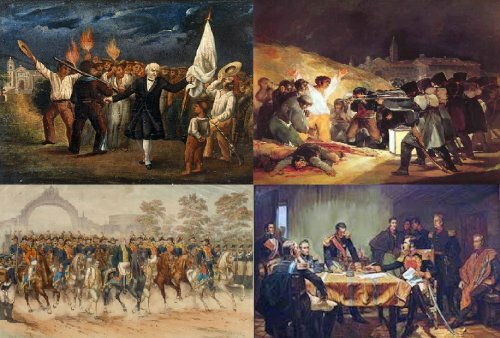Mexico Independence Essay
Mexico History / / July 04, 2021
The causes of Mexico's independence are varied, it began with the conflict in Spain and the intention that Fernando VII, who was removed from the throne in Spain, the intention of the insurgents was that it governed in the new Spain, but the end of the conflict culminated with the independence of the new Spain and the later creation of independent Mexico.

The process that led to independence was long, it lasted from 1808 to 1821 and was very complex, in it three stages should be highlighted:
- The invasion of Napoleonic troops to the peninsula (Spain)
- The power vacuum in the new Spain
- The board as an autonomist movement.
This movement and uprising was put down by the Spanish elite force, which included members of the Mexican consulate, the audience, and the archbishopric.
Subsequently, as a result of the Spanish reaction, conspiratorial nuclei of the Creoles were organized in different parts of the country, but especially in the Bajío.
The insurrection broke out abruptly in September 1810, led by priest Miguel Hidalgo under an ambiguous program that dragged the popular sectors, thus adding up to eighty thousand insurgents.
The fear of the social revolution prevented the majority of the Creoles from joining the movement, which was finally annihilated by the Spanish royalist army.
Miguel Hidalgo He was executed on July 30, 1811, reducing the insurgents to dispersed groups and guerrillas that were commanded by the priest José María. Morelos y Pavón and by Vicente Guerrero, being the priest José María Morelos y Pavón recognized as the maximum leader of the insurgents and named generalissimo.
At this time of the insurgency, popular participation had less weight and instead the liberal component gained influence within the movement; Independence was defined as the reason for the insurrection, in 1813 a congress was organized in Chilpancingo, which declared the independence of Mexico and the constitution was promulgated.
Since the end of 1815, the position of the insurgents organized in guerrillas was very weakened, although it lasted until the proclamation of independence in 1821.
The third phase of the independence movement took on other characteristics. The reimplantation of the liberal system in the metropolis at the beginning of 1820 caused a change of alignments in Mexican society. The liberal regime meant ending the privileges of the military and ecclesiastics, as well as their property. Under these circumstances, the Mexican oligarchy finally supported independence and, faced with such a political alliance, the Spanish empire could not be maintained.
The third part of the insurgent struggle was due to the fact that the Creole officer Don Agustín Iturbide, until then realistic, made public the plan of Iguala on February 24, 1821, and on September 28 proclaimed the independence.
He was the one who organized the last envestida, took advantage of his knowledge of the structure of the royalists and decided the formation of independent Mexico.
After these movements there was the so-called entry of the Trigarante army, (the army of the three guarantees), which proclaimed the independence of the new Spain and the creation of Mexico.
The first government was of Don Agustín de Iturbide, but it was not democratic but he was elected emperor and declared as his Serene Highness, later and after his From him, the presidential periods began, which have been presented to this day, with the exception of Santa Anna, who was also elected emperor in one of his periods.

